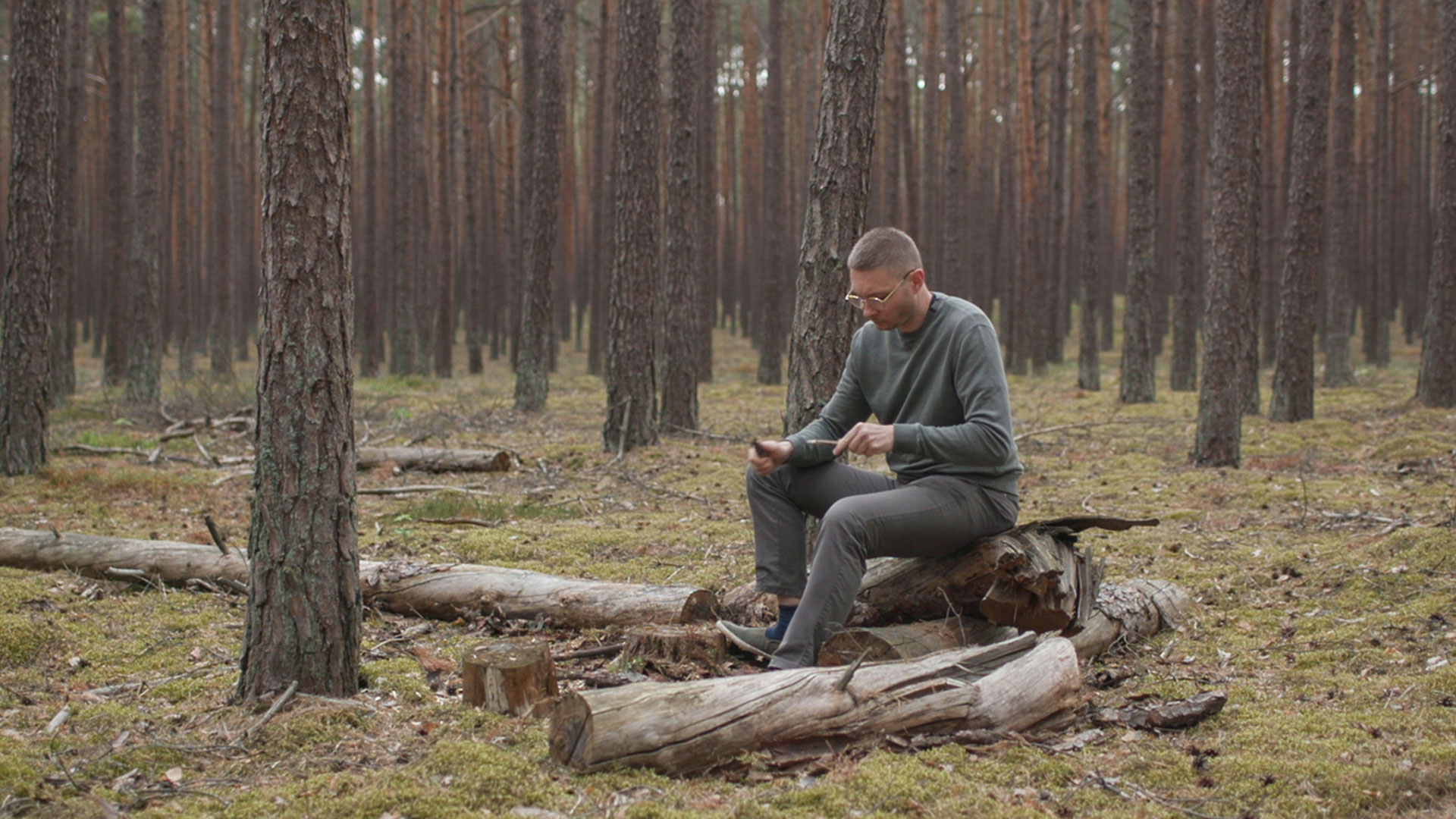Video performance
Ograniser: Galeria Rodriguez
Title of the video performance: Sticks, Trees, Forests, 2019.
Date of premiere: 20 May 2020
Sticks, Trees, Forests
I am sitting among the future furniture. I am in a commercial forest. The pines are tall and straight, just like the boards will be in the future. I’m shaving a stick with a knife; not only one, but one after another, from the beginning to the end, without any particular purpose. The shavings fall densely under my feet. What I am doing with this stick, is what people do with trees and whole forests on a global scale. This is the content of the video recording of a performance I made in 2019 (https://vimeo.com/363105456).
Huge areas of planted forests form paranatural monospecies ecosystems that are felled and exploited with the use of technology. Unfortunately, commercial forestry involves cutting down and planting. The only matter that counts are cubic meters of harvested wood (a machine called harvester can replace one month of human work in a day; it cuts 150-200 cubic meters of wood within 10 hours).
I wonder about the balance of pros and cons of using the latest technology. Are the bad sides of if not detrimental both for nature and for us? The very division between humans and nature is quite strange. We must bear in mind that it is impossible to plant a natural forest. Instead, we could allow the forests that already exist to maintain their wild state.
Between 30 and 50% of terrestrial ecosystems should be left intact, in order to balance for the exploitation and to improve the general condition of the environment. More than 50% of natural forests on Earth have been cut down. Deforestation is a threat, as it involves a long-term felling huge amounts of trees and turning forests into meadows or fields. The industry is focused on obtaining resources, until they are fully exploited. Therefore forests have no chance to regenerate. Since the discovery of making fire, humans have always needed wood. Today, however, obtaining wood is a pillage creating an irreparable loss for the environment. Regular felling allows forests to regenarate. For large-scale felling, trees are simply resources that cen be exploited, and forests are only areas that need to be cut down, in order to facilitate human activity.
I am sitting on a trunk. The manual action of shaving a stick becomes increasingly automatic. My hand remembers the movement. The knife is sharp. The cuts are becoming more agile. My focused mind has taught the hand to use this tool. Life slows down and becomes more peaceful. My mind starts to wander and I ask myself questions. Can wooden chairs or wooden tables still be considered eco-friendly? Can a fragment of a wild,unmowed meadow be considered a statue? How long will the trees we plant grow?
The performative action I engage in during my residency involves a manual process of shaving dry sticks, which I will be looking for in Silesia, in places like forests,parks and outskirts. I will later gather the sticks in the gallery. The performance will be open to the public. Perhaps somebody will wish to join me spontaneously. The cyclical action will be registered with a camera. Shavings from each day of the performance will form a huge heap. It will serve as the foor surface for the final presentation that will feature a video documenting my actions. I deliberately used simple, inexpensive tools like sticks, a knife, and a chair. By doing so, I could use the part of my budget to plant new tries in public space. I believe it to be much more important for out “survival” than the excessive production things. Planting of the trees will also be recorded. The final video consists of shots from the gallery and material recorded during the performative shaving of sticks and tree-planting.
Michał Smandek





